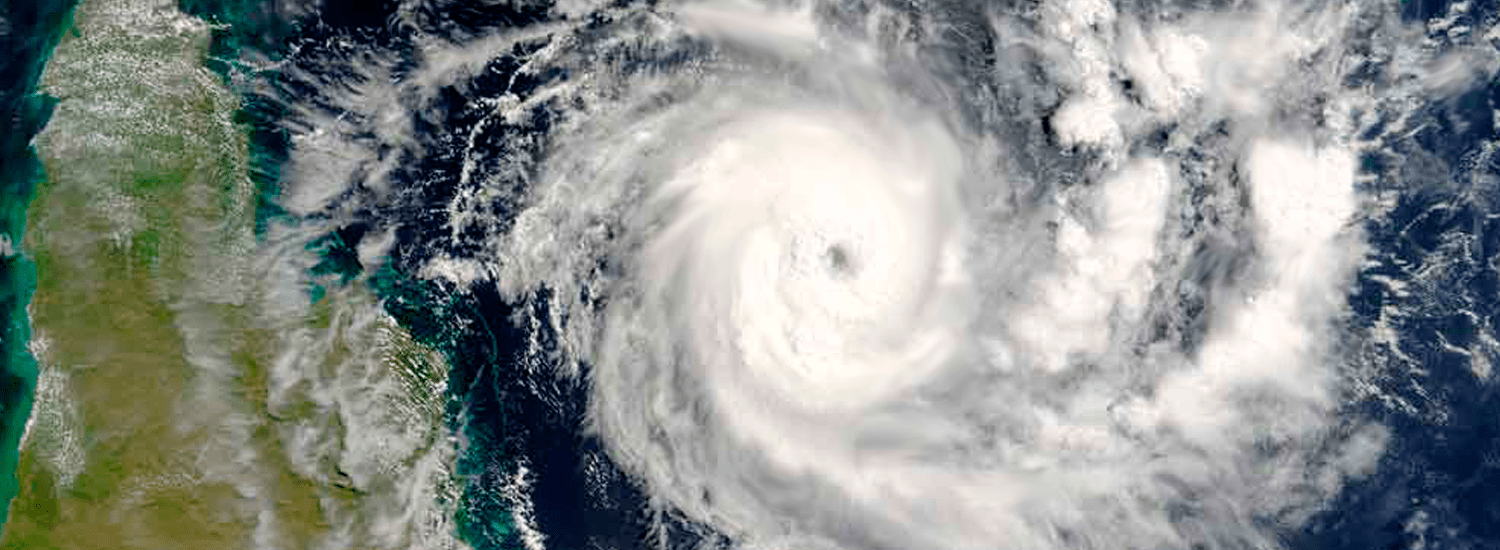How to get your home ready for storm season
- Prepare your home now for storm season – check your roof, clear gutters and downpipes, trim trees
- Store your car undercover, don’t drive through floodwaters and pull over if you’re caught in a hail storm
- Reassess your insurance cover and make sure your sum insured is enough to rebuild to your current standard
As well as sun, sea, sand and surf, Australian summers bring with them one other guarantee – storms. Storms are common between November to February; they hit without warning and can have a devastating impact on homes and belongings.

“Storms can cause extreme damage to homes,” says David Gow, QBE’s Head of Property Claims. “During storm season we see a lot of claims for damage to buildings particularly, as well as damage to possessions.”
It pays to be prepared, and while in some instances, storm damage is unavoidable, there are a number of steps you can take to neutralise and minimise some risk.
Maintenance is key
A good place to start that preparation is some simple home maintenance.
“You’ve got to get into that mentality of preparedness,” says Lee Thatcher, QBE’s Repair Quality Manager. “Check your gutters are in good condition, free from rust and holes.
“Make sure your downpipes are free from obstruction. Large volumes of rainwater need to travel down them. If they’re blocked, it’ll backfill and flood your roof cavity.”
Roofs and windows
A storm can cause major damage to a roof, so check yours is in good repair, and fix any loose or damaged tiles.
“Tiled roofs can be a problem during a storm,” says Thatcher. “I remember a storm in Melbourne with hailstones the size of cricket balls. They just smashed through the tiled roofs, went through ceilings, damaged plaster walls, and the holes in the roof obviously let the rain in.
“Get your tiled roof checked for any cracks from previous storms or general deterioration.”
Your windows are also an area of vulnerability, as sealing can deteriorate over time, creating an open invitation to water. Check the sealing and replace if necessary. Ensure your window frames and timber fascias are in good condition – if the paint is peeling, repaint. Any water that it’s exposed to will just soak into the frame.
It’s important to maintain your home regularly – your insurance is there to put you back into the same position before the event, so regular maintenance will help make that process as easy as possible.
Surrounding areas
As well as prepping your building structures, it’s important to look around outside. Trim back any trees that are too close to your home and remove any dead branches. Tree debris can become dangerous missiles in a storm, so take steps to minimise that risk.
Outdoor furniture can also be damaged by hailstones or picked up by heavy winds, so put items that aren’t in regular use away, and pin down things such as trampolines.

Flood risks at home
Storms bring with them high volumes of water in a very short space of time. Over recent years we’ve seen significant flood activity in areas that have never before experienced that level of floodwater, so if you’re in a flood-prone area – even if you’ve never been affected previously – it’s wise to prepare.
“Get some sandbags and place them under doors to stop water from getting in,” says Thatcher. “If you have a basement, a sump pump is also useful.”
Storing contents in your basement on pallets is also worthwhile – so if some water comes in, it doesn’t destroy your belongings.
Lock up your vehicles
Some of the most common post-storm claims are for damage to cars caught in a hailstorm, so keeping your vehicles under cover during storm season is advisable if you can. However, it’s not always possible.
“If you are driving in a hailstorm, just pull over,” advises Norm Casamento, Head of Motor Claims at QBE. “Find a safe place to park. If you can get out and get undercover, do so.”
TV newsreel regular during storm season is the car stuck in floodwater.
“Every year people will drive through floodwaters thinking they’ll get through,” Casamento says. “And every year people get stuck. That’s definitely something to avoid.”
Basement car parks are also problematic in a storm, so it’s advisable to park on higher levels of a multi-level car park, while maintenance is also important when it comes to vehicles. For example, a small chip in your windscreen may not appear to be a huge issue, but in a hailstorm even the smallest amount of windscreen damage could cause your whole windscreen to crack.
Preparation is everything
If you’re in a remote or rural area, stock up. If there’s one road in and out and a tree collapses, it could be days before you can reach your nearest store.
Power cuts can also be commonplace in rural areas during storm season. An alternative power source, therefore, is important. And, if you’re living kilometres away from others, a satellite phone is also worth considering, to ensure you can communicate with emergency services.
Regardless of the season, it’s smart to know where your insurance documents are, so keep them handy and upload digital versions to the cloud if possible. Take some time to make sure you have everything covered that needs to be insured – and at the correct values.
Sometimes, damage from a storm can’t be prevented. On many occasions, however, your actions can minimise – or prevent – your home falling victim.
Find out more
Take a look at our before storm season checklist for a simple list of steps you can take to prepare your home now.










